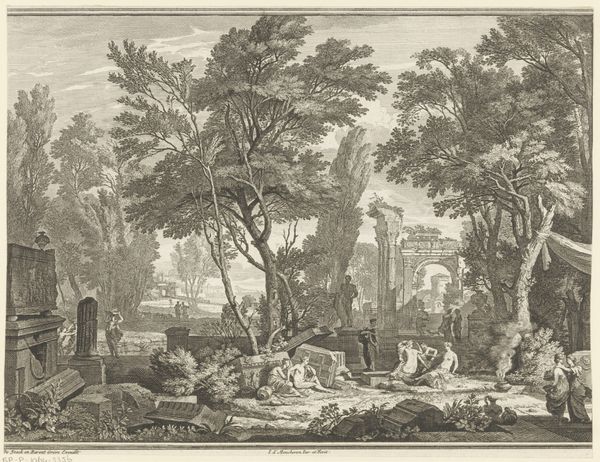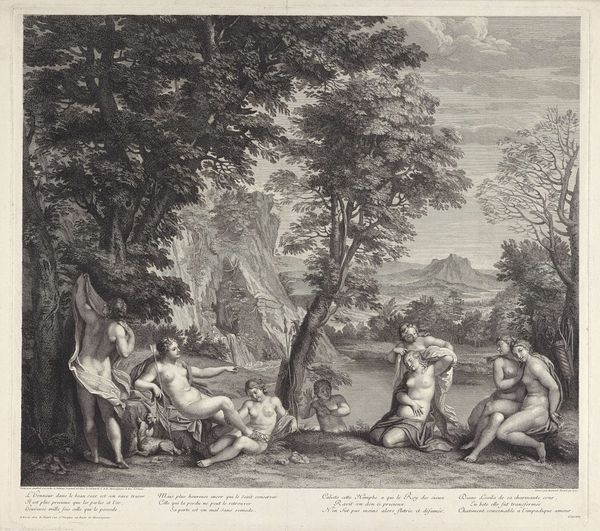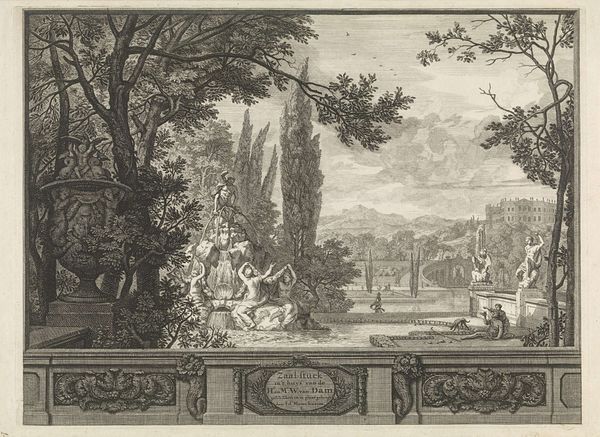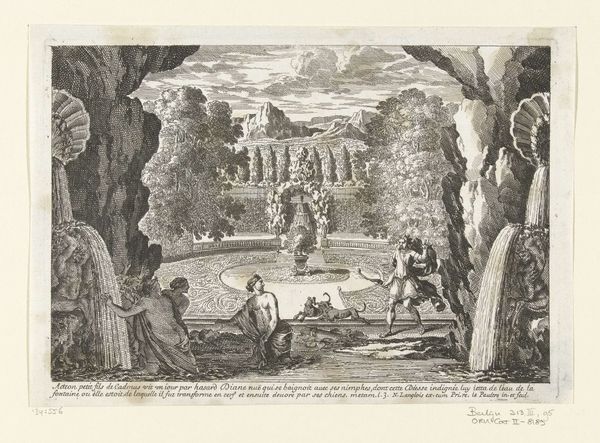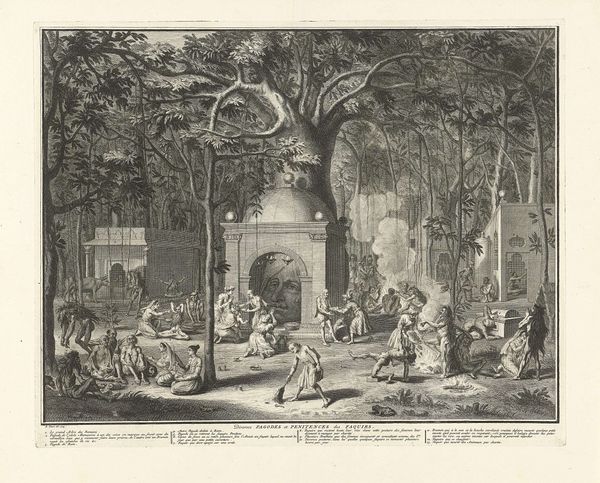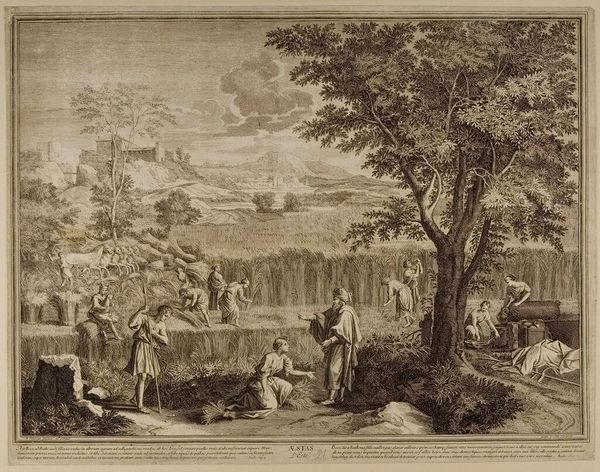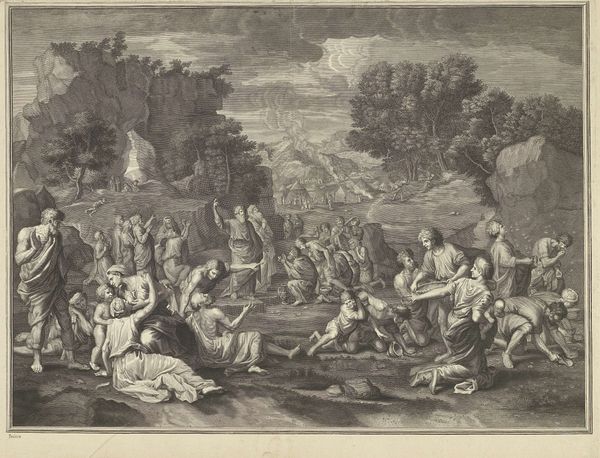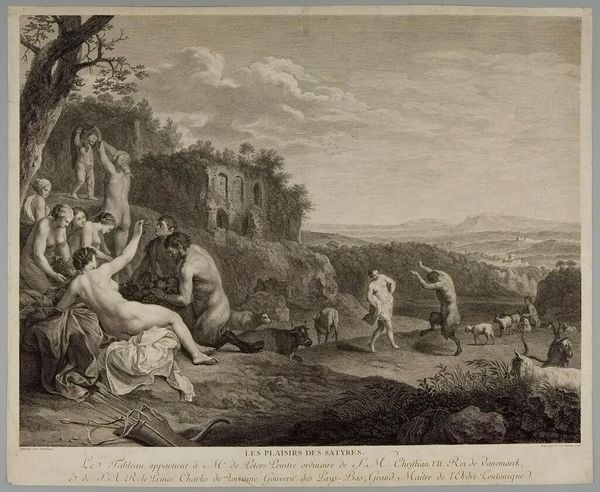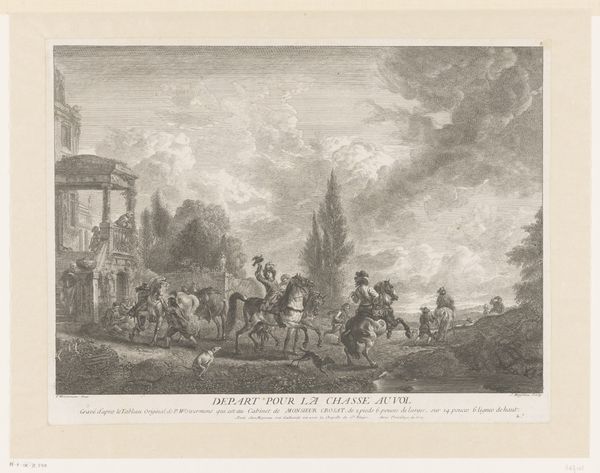
print, engraving
#
baroque
# print
#
old engraving style
#
landscape
#
history-painting
#
engraving
Dimensions: height 328 mm, width 422 mm
Copyright: Rijks Museum: Open Domain
Editor: Here we have "Dodenherdenking bij de Armeense christenen," or "Commemoration of the Dead among Armenian Christians," an engraving by Bernard Picart from the early 18th century. It’s quite a scene – sombre, with a gathering around several fires in a landscape setting. What stands out to you in this piece? Curator: It’s fascinating how Picart, a Western European artist, depicts this Armenian Christian tradition. We should consider this print within the context of early 18th-century European attitudes towards the East. Notice how he structures the composition - a very ordered landscape, the people almost posed. Does that strike you as… staged? Editor: Definitely staged, and almost ethnographic. I'm wondering, what would a more ‘authentic’ representation of such a ceremony look like, and how is this print influenced by the artist's own cultural background? Curator: Precisely. It’s not just about recording the event, but about how Europeans were choosing to view and represent cultures distant from their own. Prints like this circulated widely, shaping public understanding. Consider the role of the printing press itself - how does mass reproduction influence our perception of authenticity? Editor: That’s a great point! So, it’s not just a picture of a commemoration, but also a statement about cultural understanding – or misunderstanding – at the time. I’ll definitely look into the political context behind these depictions further! Curator: And perhaps explore Picart's other works – do similar patterns emerge in his portrayals of different cultures? Art always has a place within its society, so you must consider what its goal is. It seems there's more to it than just remembrance here. Editor: Right, that’s definitely food for thought. I am definitely more equipped to read this as a socio-historical record now, not just as art! Thanks so much!
Comments
No comments
Be the first to comment and join the conversation on the ultimate creative platform.

